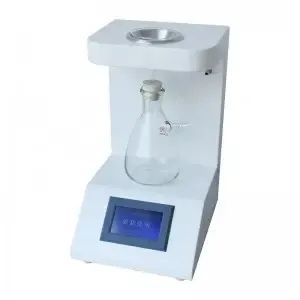 English
English


Designing a Self-Sustaining Distillation System for Efficient Liquid Separation and Purification Processes
The Rise of Automatic Distillation Systems Enhancing Efficiency and Precision in Distillation Processes
In recent years, the field of chemical engineering has witnessed significant advancements, particularly in the area of distillation. One of the most notable innovations is the development of automatic distillation systems. These systems, designed to streamline and optimize the distillation process, are becoming increasingly vital across various industries, including pharmaceuticals, petrochemicals, and food processing.
Understanding Distillation
Distillation is a crucial separation technique used to purify liquids by separating components based on their boiling points. Traditional distillation methods often require human intervention and supervision, which can lead to inefficiencies, inconsistencies, and potential safety hazards. Automatic distillation systems, on the other hand, leverage advanced technology to enhance the reliability and effectiveness of this process.
Key Features of Automatic Distillation Systems
Automatic distillation systems are equipped with sophisticated control mechanisms that monitor and adjust key parameters such as temperature, pressure, and flow rates in real-time. These systems utilize sensors, programmable logic controllers (PLCs), and advanced software algorithms to ensure optimal performance. Some of the features that set these systems apart include
1. Real-time Monitoring Continuous data collection allows for immediate adjustments, ensuring that the distillation process remains within specified parameters.
2. Enhanced Precision By minimizing human intervention, automatic systems reduce the likelihood of errors and variations, leading to higher purity and yield of the desired product.
3. Data Integration and Analysis Many modern systems are designed to integrate with enterprise resource planning (ERP) software, allowing companies to analyze operational efficiency and make informed decisions based on real-time data.
automatic distillation system

4. Safety Enhancements Automatic systems can be programmed to detect anomalies or unsafe conditions, triggering alarms or shutdown procedures to prevent accidents.
Applications Across Industries
The versatility of automatic distillation systems makes them applicable in a broad range of industries. In the pharmaceutical industry, for instance, they are instrumental in producing high-purity solvents and active pharmaceutical ingredients (APIs). In the petrochemical sector, these systems streamline the refinement of fuels and lubricants, leading to higher quality end products while minimizing waste.
The food and beverage industry also benefits significantly from automatic distillation, particularly in the production of essential oils, spirits, and flavorings. The enhanced precision of these systems ensures that the flavor profiles are consistent and high-quality, which is crucial for maintaining brand reputation.
Challenges and Future Prospects
Despite the numerous advantages, the adoption of automatic distillation systems is not without challenges. Initial investment costs can be high, and there may be a learning curve for personnel to operate and maintain these advanced systems. Moreover, industries must ensure that these systems comply with regulatory standards, which can vary significantly across different sectors.
Looking ahead, the future of automatic distillation systems appears promising. With the ongoing advancements in artificial intelligence and machine learning, we can expect even greater enhancements in the efficiency and effectiveness of these systems. Developers are continually working on creating more intuitive interfaces and improving the fault-tolerance of automatic systems, making them more accessible for a wider range of users.
In conclusion, automatic distillation systems represent a significant leap forward in distillation technology. Their ability to enhance efficiency, precision, and safety makes them invaluable assets in an increasingly competitive industrial landscape. As industries continue to recognize their benefits, the widespread adoption of these systems is likely to grow, paving the way for a more efficient and sustainable future in chemical processing.
-
Differences between open cup flash point tester and closed cup flash point testerNewsOct.31,2024
-
The Reliable Load Tap ChangerNewsOct.23,2024
-
The Essential Guide to Hipot TestersNewsOct.23,2024
-
The Digital Insulation TesterNewsOct.23,2024
-
The Best Earth Loop Impedance Tester for SaleNewsOct.23,2024
-
Tan Delta Tester--The Essential Tool for Electrical Insulation TestingNewsOct.23,2024





